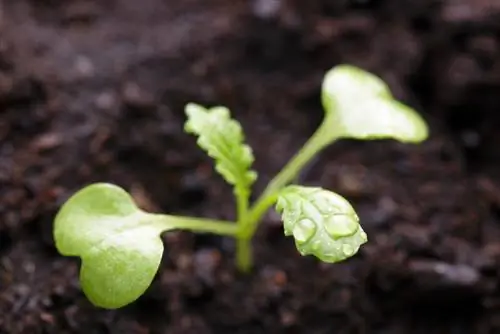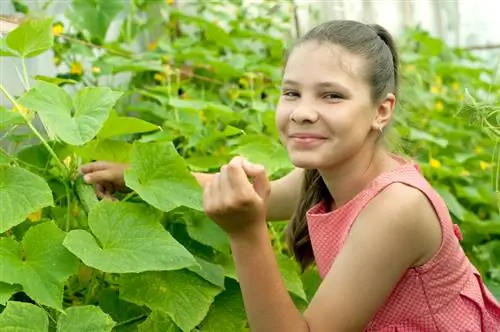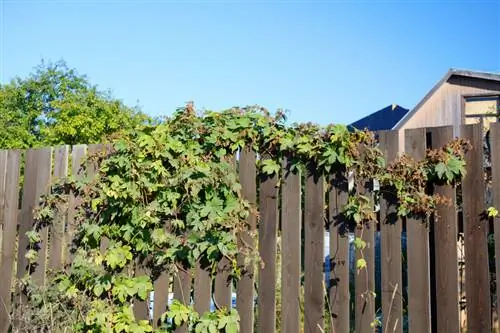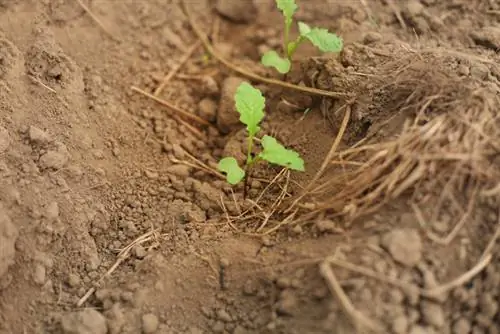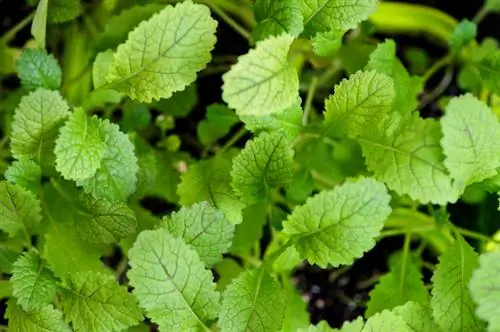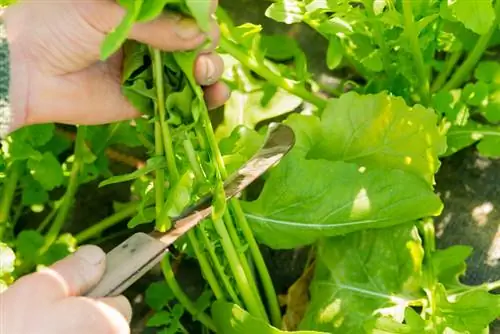- Author admin [email protected].
- Public 2023-12-25 17:45.
- Last modified 2025-01-23 11:20.
Mustard is particularly popular in Germany. But it is increasingly being planted in allotments not only because of its sharp seeds but also because of its delicious leaves, beautiful yellow flowers and its function as green manure. Find out below how to grow mustard in your own garden.
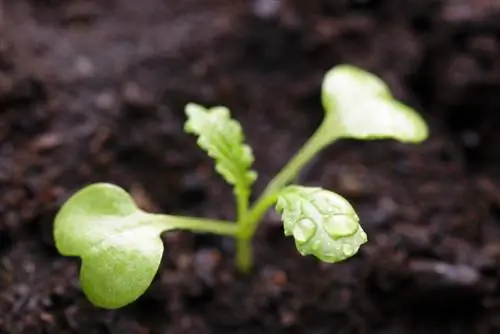
How to grow mustard in the garden?
To grow mustard in your own garden, sow the seeds in May for seed harvest or year-round for green manure and leaf harvest. Choose a light, moist location and observe the crop rotation for cruciferous vegetables. Harvest the leaves and seeds as soon as they are ripe.
Not all mustard is the same
Roughly speaking, there are three types of mustard: brown, white (or yellow) and black mustard. All three belong to the cruciferous family and can be used to make mustard. Only the taste varies: black mustard, also called oriental mustard, tastes hottest; Hot mustard is made from brown and black mustard seeds. White mustard is rather mild and is processed into medium-hot, aromatic mustard. White mustard does not grow as tall as black or brown mustard and is therefore more suitable for growing on the balcony or windowsill.
The right location for the mustard
Mustard is one of the most undemanding crops that you can plant in your garden or on the balcony. It is not picky about either location or care. The only important thing is that you pay attention to crop rotation: mustard is a cruciferous vegetable and can only be planted in the same place every four years. So do not sow your mustard in a location where brassicas, radishes, cress, rapeseed or radishes have grown in the previous three years. Of course, mustard also needs light, but it doesn't really matter whether it is in partial shade or in the sun. Mustard also thrives easily in a pot on the windowsill or on the balcony.
Sowing mustard
Mustard can be sown all year round. However, if you want to harvest the seeds, you should plant your mustard seeds in the ground at the beginning of May. It's best to grow it on the windowsill and plant the plants (€11.00 on Amazon) outdoors after the Ice Saints.
Care for mustard
Mustard, as I said, needs almost no attention. Of course, you shouldn't let it dry out: provide it with water regularly and your mustard will thrive wonderfully. He doesn't need fertilizer.
Harvesting mustard
Not only the seeds can be harvested, the aromatic leaves can also be eaten. You can harvest these permanently by only removing the outer leaves and leaving the plant undamaged. The mustard seeds are harvested after flowering. The beautiful, strong yellow flowers usually appear from June onwards. Now you should stop harvesting the leaves, which are gradually dying anyway. You can find out how to harvest the seeds correctly here and how to process them into green manure, read here.
The mustard in the profile
Here are the most important things at a glance:
- Genus: Brassica
- Family: Cruciferous plants
- Flower color: yellow
- Use: as a medicinal and useful plant
- Lifespan: Annual
- Sowing: in May (for seed harvest), all year round (green manure, leaf harvest)
- Location: light, moist
- Harvest time: October (seeds), all year round (leaves)

